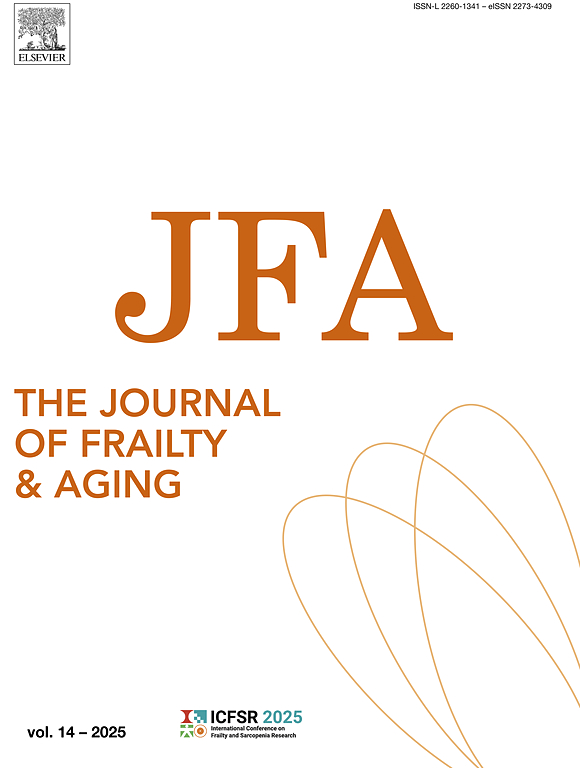
Frailty indices based on routinely collected data: a scoping review
Background
Frailty is a clinical syndrome characterised by an age-related decline in the physiological reserve and functioning of multiple organ systems, compromising the ability to resist minor stressor events. As a result, there is increased vulnerability to severe adverse outcomes such as falls, fractures, disability, and dementia, leading to a higher incidence of emergency department visits, hospitalisation, and care home admissions. Projections suggest that the proportion of the world’s population aged ≥65 will increase from 9.7 % (770 million) in 2022 to 16.4 % (1.6 billion) in 2050. As the risk of frailty and its associated adverse outcomes increase with both biological and chronological ageing, there is an urgent priority to address the heterogenous healthcare needs of frail older adults through timely identification and management.
Over the past two decades, several tools have been developed to identify and assess frailty, predominantly based on two conceptual models: the phenotypic and deficit accumulation models. The phenotypic model of frailty, posited by Fried et al., states that the multiple components of frailty precede incident disability and can manifest clinically as the following signs and symptoms, i.e. phenotypes: shrinking (unintentional weight loss of ≥4.5 kg in the past year), weakness (low grip strength), exhaustion (self-reported), slowness (slow walking speed), and low physical activity. The deficit accumulation conceptual model, posited by Rockwood et al., proposes that “the more things individuals have wrong with them, the higher the likelihood that they will be frail” [5, pp 722]. These “things that individuals have wrong with them” are deficits and can include health-related variables such as symptoms, signs, disabilities, and abnormal laboratory values. This conceptual model can be operationalised as the frailty index (FI), a continuous score that is calculated as a proportion of the number of deficits to the total number of variables included in the index. The FI has been validated in both hospital and community settings and has demonstrated high predictive validity for adverse clinical outcomes such as mortality and care home admission. While both conceptual models may be considered complementary and useful markers of the need for intervention, key differences between the two prevail. The phenotypic model solely focuses on physical manifestations without considering psychosocial factors; requires specialised equipment (such as a hand dynamometer) and some clinical expertise for assessment; and can be applied before conducting a full comprehensive assessment. In contrast, the deficit accumulation model allows the inclusion of deficits across different clinical, functional, and psychosocial domains but requires pre-existing records or a full comprehensive assessment to construct the FI. Hence, while the frailty phenotypes can help indicate the need for intervention in non-disabled people to prevent incident disability, the FI can help dictate the type of intervention based on the accumulated deficits and functional losses in both people with and without disability.
Another difference between the frailty phenotypes and FI is the mode of measurement. Frailty identification using the phenotypic model requires in-person assessments of grip strength and walking speed. Although Mitnitski et al. used survey-based data to construct their FI, retrospectively collected routine data can be leveraged to calculate FIs automatically with minimal effort. Such data include symptoms, signs, diagnoses, laboratory test results, and socioeconomic and lifestyle information that are collected in different care settings and stored in electronic health records (EHRs) or administrative databases. Thus, these databases store a plethora of discrete datapoints about a patient that can serve as variables for the automatic calculation of FIs.
Research has recently emerged on the development and validation of FIs based on routinely collected data stored in EHRs and administrative databases. Several reviews on utilising routine data for frailty assessment have been recently published; however, all but one used a narrative approach. These reviews signal the growing recognition of leveraging routine data for population health management and geriatric medicine, partly driven by recent monumental advances in data processing power and storage. The number of publications on FIs based on routine data is continuing to rise, but how they fit in the context of previously reported research gaps and real-world clinical applications remains unclear.
This scoping review aimed to evaluate the breadth of the current evidence on FIs calculated from routinely collected data. By using a systematic approach to search and characterise peer-reviewed research, our review builds on previous literature reviews on the subject.
Methods
We chose to conduct a scoping review as they help determine the coverage of literature based on an emerging topic, investigate research methodologies used in a particular topic, and identify knowledge gaps in the evidence. As research using FIs calculated from routinely data is rapidly emerging, conducting a scoping review helped gain a clearer picture of the retrospective research landscape. We conducted this scoping review according to the Joanna Briggs Institute methodology for scoping reviews and its reporting was guided by the Preferred Reporting Items for Systematic Reviews and Meta-analyses extension for scoping reviews (see Supplement 1, Supplementary Material 1).
Results
Steady rise in research on routine data-based frailty indices (FIs) in the last decade.
Routine data-based FIs are valid tools to stratify risk in different populations and settings.
However, research is limited to specific geographies and routine adoption is slow.
Deficits in these FIs highlight an overtly clinical approach in frailty assessment.
Exploring data linkages to construct FIs is warranted to proactively monitor frailty.
Conclusions
Full publication
Frailty indices based on routinely collected data: a scoping review
(Journal of Frailty and Aging)
Date
May 2025









0 Comments